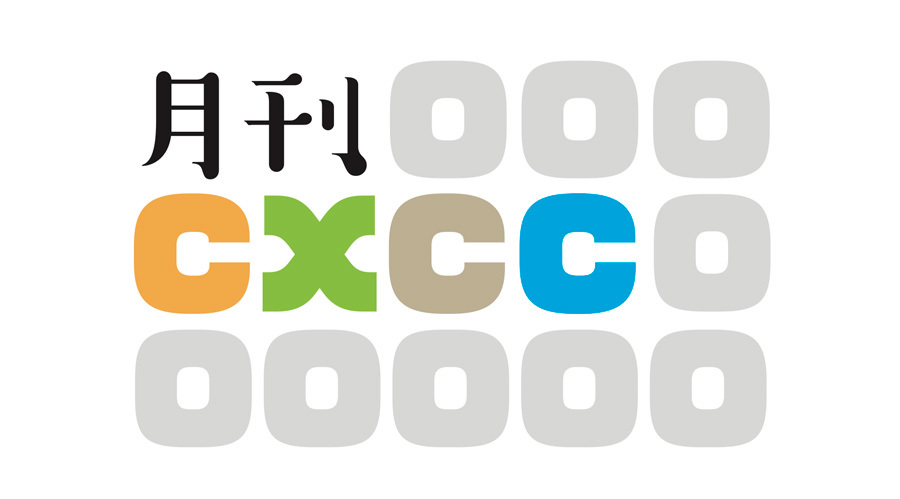Note: This website was automatically translated, so some terms or nuances may not be completely accurate.
Connecting Art Manga and the Real World: Insights on Experience Design from the "Blue Period Exhibition"
The ever-evolving field of CX (Customer Experience).
How can Dentsu Inc.'s creative team contribute to the CX domain, now demanded in every scenario?
To explore this potential, members of Dentsu Inc.'s CX specialist division, the "CXCC" (Customer Experience Creative Center), share insights on CX and creativity in this series. This is "Monthly CX" ( For more on Monthly CX, click here ).
This installment features the case study of the "Blue Period Exhibition: Is Art Talent?" (hereafter: Blue Period Exhibition), held in Tennozu, Tokyo, from Saturday, June 18, 2022, to Tuesday, September 27, 2022. What was the secret to this exhibition being so beloved by many fans of the original manga? We asked Naomi Okamura, who was involved as the art director, about the passion behind the project and the thoughtful approaches they took.
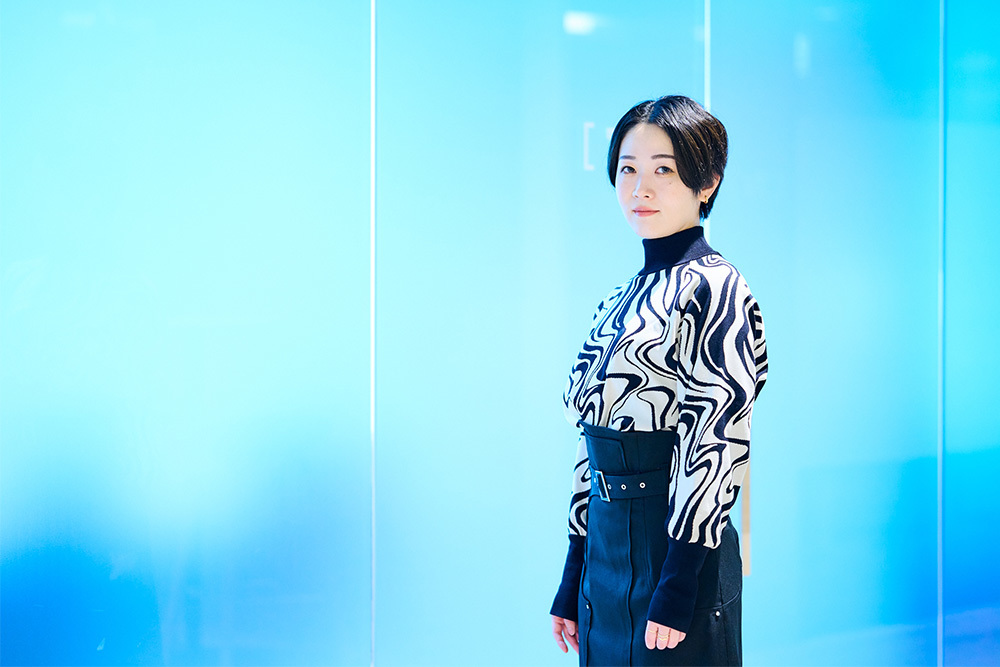
Dentsu Inc.
Customer Experience Creative Center
Art Director / Planner
Born in 1991. Focuses on creating content that embodies concepts throughout the entire experience, and on developing entirely new experiences and expressions utilizing technology. Performs wide-ranging art direction and planning across media including events, video, and graphics.
Designing CX that enables attendees to take something away as an experience, rather than being passive.
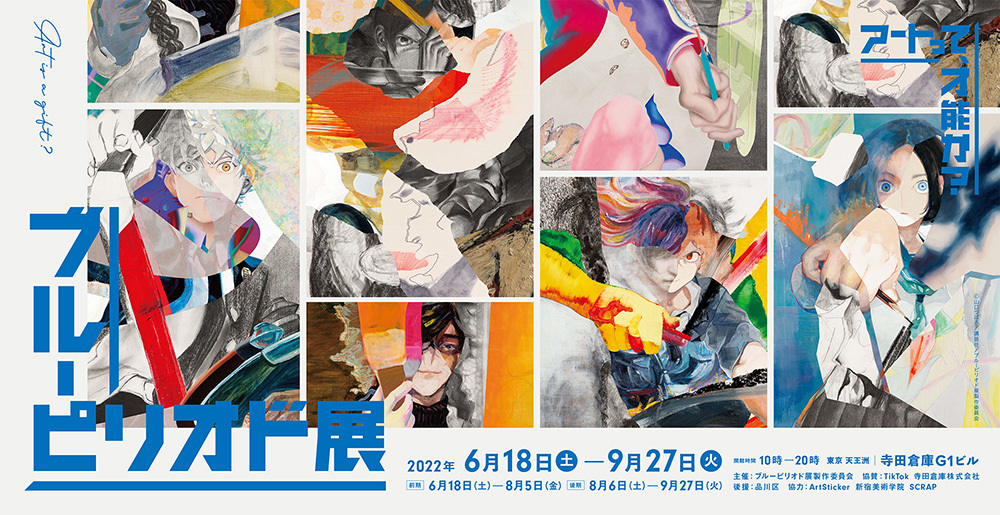
Monthly CX: What kind of exhibition was the "Blue Period Exhibition"?
Okamura: We prepared numerous features designed to be enjoyable both as a manga exhibition and as an art exhibition. We included content that allowed visitors to relive the protagonist and his friends' story, such as displays of the actual paintings featured in the manga—something many fans were looking forward to—and an immersive theater experience. We also incorporated initiatives to make art feel more accessible, like explanations of famous paintings and displays of works created by active artists during their preparatory school days.
Beyond the exhibition content, we designed the promotional website with a horizontal scroll to evoke the feeling of walking through a gallery. We also launched a digital exhibition for those unable to visit in person.


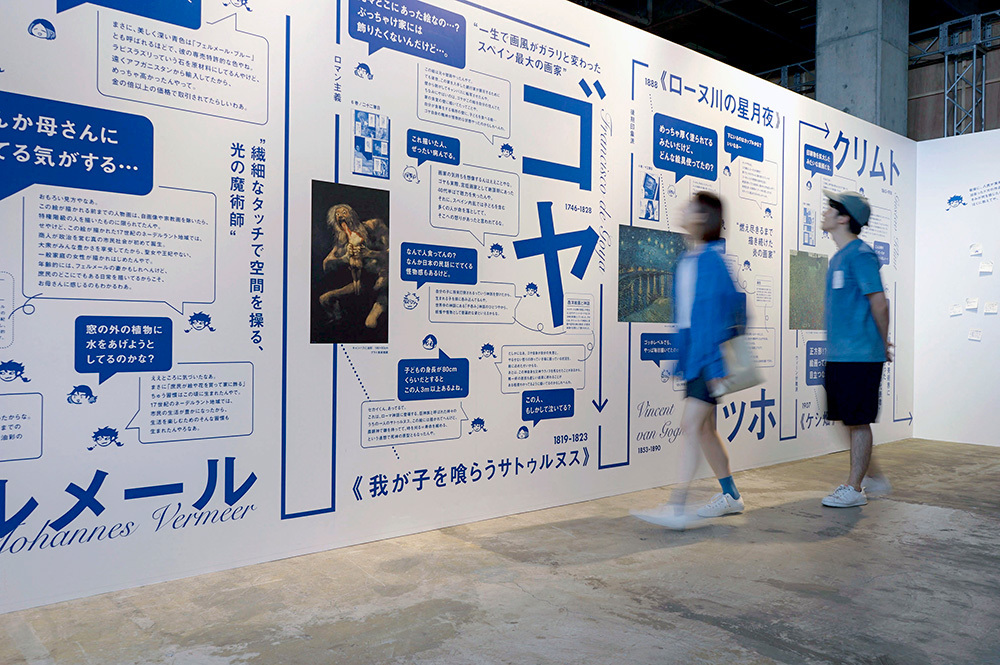
Okamura: This exhibition was meticulously crafted with the support of over 200 professionals. This includes Tsubasa Yamaguchi, the creator of Blue Period, staff from Kodansha, art students nationwide who contributed to the key visuals and exhibition pieces, as well as experts in venue design, commentary writing, and catalog production.
Monthly CX: I see. So it's not just a display of manga original art, but a multifaceted exhibition about art itself.
Okamura: Previous manga exhibitions often focused on entertaining fans with original artwork or objects recreating famous scenes. However, the manga "Blue Period" depicts the real world of people currently confronting art. Therefore, we believed the real highlights weren't just displaying the original artwork, but rather the protagonist's struggles and the fundamental question of what it means to paint.
Another thing: so-called art exhibitions tend to be passive experiences. Unless you have a strong interest or knowledge, you often just glance around and leave. If you're familiar with art history or painting techniques, you can enjoy it, but for others, finding a way to enjoy it can feel like a bit of a hurdle.
Monthly CX: Art exhibitions do have that image of being high-brow and requiring prior knowledge to enjoy.
Okamura: I think this is also the aspect where the original author, Mr. Yamaguchi, challenged himself the most. For this exhibition, our creative goal was "not to make it just a manga exhibition, but to lower the barrier to art."
For the "Blue Period Exhibition," we focused on creating a customer experience where visitors wouldn't just passively consume, but would take something away with them – an experience or feeling. For example, we incorporated elements within the content that posed questions to visitors, or created installations that let them experience different perspectives as if they were the protagonist.
Monthly CX: What specific plans were implemented?
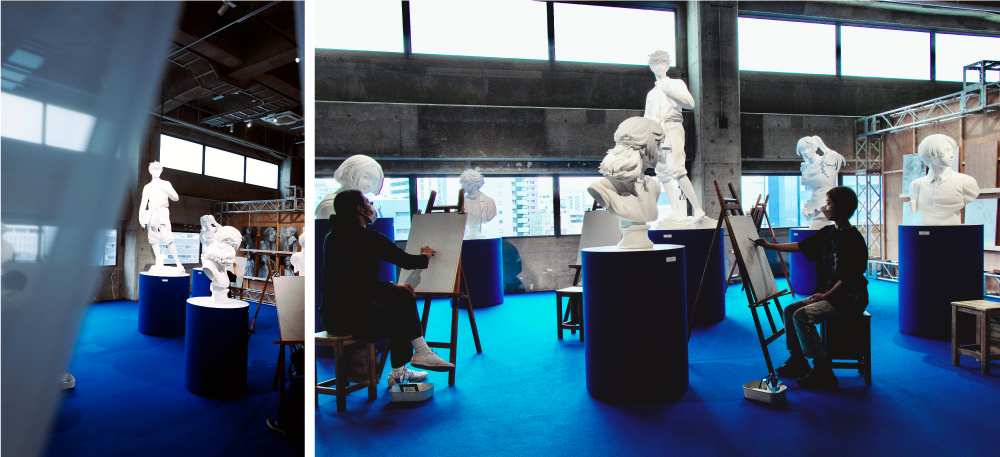
Okamura: One highlight was the "Character Plaster Room," featuring plaster casts modeled after the characters. We didn't just have visitors admire these sculptures; we let them freely sketch them right in the venue. Having visitors sketch on-site was something the entire team was determined to achieve from the very start.
Sketching scenes appear frequently in the manga. That tense atmosphere, where only the sound of pencils scratching echoes through the space, is depicted quite impressively and realistically in the comic. However, we thought many people might only truly grasp that realism by witnessing the actual act of sketching firsthand. So, we designed it so visitors could experience the "act of people sketching" itself.
Plus, since people outside the art world rarely get to experience drawing, we hoped this would encourage them to give it a try. We displayed the visitors' drawings for a period, allowing them to experience having their work seen by others. Quite a few serious artists showed up too (laughs).
Monthly CX: It's unique how you created an interactive setup where visitors can actively create something on the spot, rather than just viewing and leaving.
We focused on immersion. We recreated scenes where you could experience the characters' emotions firsthand.
Okamura: We also displayed actual paintings featured in the work, character relationship charts, and prepared activities like "pretend art acquisition" based on pieces appearing in the story. Among these, the exhibition of the self-portraits drawn by the protagonist Hachiro and others for the Tokyo University of the Arts preliminary exam drew significant attention from original work fans.
Beyond the protagonist's self-portrait, other characters' self-portraits were also displayed. These were actually venue-exclusive pieces not featured in the actual work. For the self-portraits other than Yagami's, we discussed with Mr. Yamaguchi what kind of self-portrait each character would likely paint based on their personality and mindset. We then commissioned current art university students and artists to create them. By meticulously recreating the scene – easels, box stools, admission tickets pinned to the wall – and displaying the works, we created an immersive experience that felt like stepping right into the manga world.
Monthly CX: The staging recreating the scene from the story where a broken mirror lies beneath Hachitora's self-portrait is really clever. Are there any other exhibits that left an impression on you, Mr. Okamura?
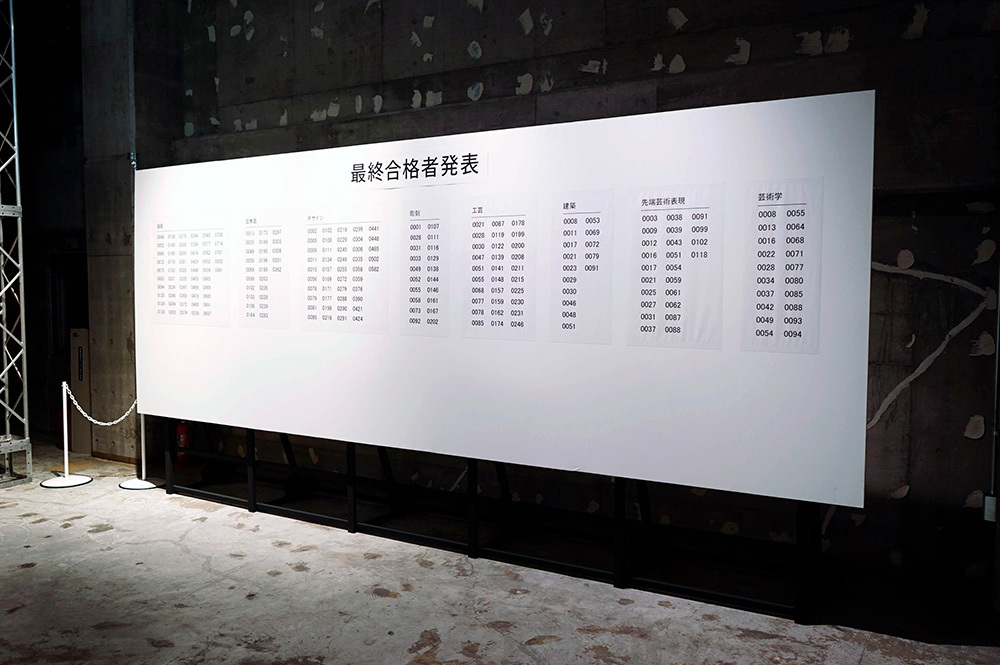
Okamura: Probably the exhibit recreating the Tokyo University of the Arts entrance exam results announcement scene. This is a particularly memorable moment where the characters' emotions are in turmoil. Each character's exam admission ticket is displayed, and seeing the number clearly reveals whether they passed or failed... By creating this realistic scene, we made it an exhibit where visitors could vicariously experience their state of mind. But there's a bit of a behind-the-scenes story too.
Monthly CX: Behind-the-scenes story, you say...?
Okamura: Originally, we planned to make this display exactly like the real Geidai bulletin board. But during team discussions, some said, "It's just too heart-wrenching." Considering people who took the Geidai exam but ended up repeating the year, or those who gave up altogether, we decided authenticity wasn't the top priority. We slightly altered the board to make it more enjoyable as a manga recreation, a bit of entertainment. I think the discussion arose precisely because the work itself contains such realistic elements.
Monthly CX: I see! I also got chills from the key visual collection at the end of the exhibition.
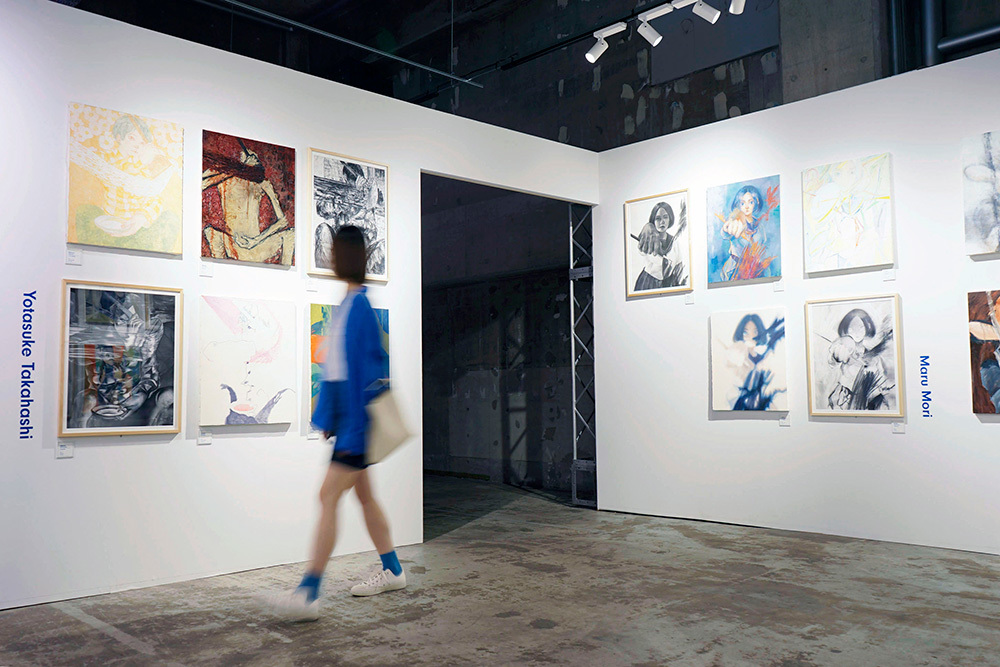
Okamura: These are the original artworks for the key visuals, created by collaging pieces drawn by current art prep school and art university students. Each student reinterpreted the covers of volumes 1 through 6 in their own artistic style.
After the key visual display, the epilogue uses words from page 1 of Volume 7: "Is art beautiful? Is there no right answer? Is it only valued after death? Is it pure expression untouched by the mundane? Really?" These unsettling words conclude the exhibition.
"Blue Period" isn't really a story about congratulating someone for getting into the Tokyo University of the Arts. Admission to the university isn't the goal, but the means; Yagami's story truly begins from here. That's why the exhibition doesn't end with a happy ending either. We intended this conclusion to convey the feeling that "this is where the thinking begins."
Allowing photography enhances the experiential value
Monthly CX: There were various unique exhibition contents. How did visitors react?
Okamura: Observing visitors on-site and reviewing social media reactions, the feedback was overwhelmingly positive. While the original manga's appeal is undeniable, many visitors understood our theme – "both an entry point to art exhibitions and an extension of manga exhibitions" – and shared this perspective on social media. The resonance was truly gratifying.
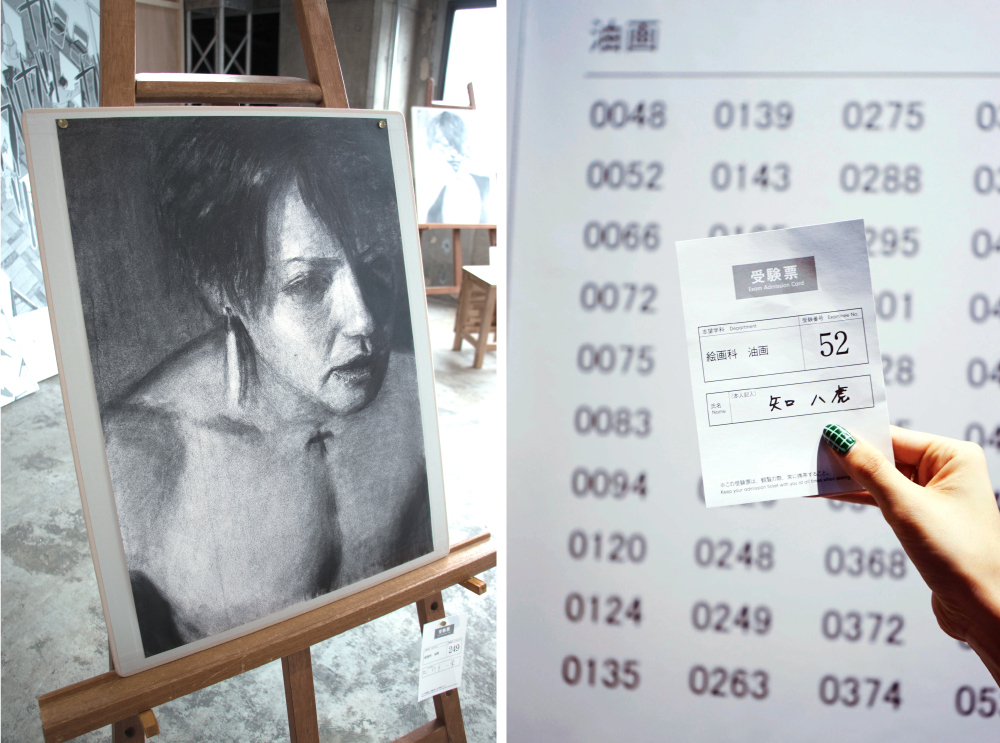
Personally, what struck me most was how many people took photos of the exam admission tickets at the self-portrait exhibit—far more than I'd imagined. These tickets, with names written in the characters' handwriting, were pinned beneath easels. It was a truly small, inconspicuous detail within the exhibit, yet everyone crouched down to look at them. Alongside the self-portraits drawn as realistic figure studies, having the actual handwritten exam admission tickets attached made many people react on social media, saying it "made the characters feel like they truly existed."
Monthly CX: Many art and manga exhibitions prohibit photography, but the "Blue Period Exhibition" allowed it.
Okamura: We allowed all photography (※). We even created and displayed official pop-ups suggesting "Here's another way to take photos," and actively encouraged it on social media. Observing other exhibitions, I realized that if photography isn't permitted, the content rarely makes it onto social media.
So for the Blue Period Exhibition, we decided to allow photography and actively encourage people to take pictures. But just saying "Photos are allowed~" doesn't mean people will take many pictures.
※Photography prohibited only for Picasso reproductions
Monthly CX: Maybe people hold back because it's often not allowed at other exhibitions.
Okamura: In the original work, there's that famous line from Senpai Mori: "If you see blue, then apples and rabbits can be blue too." We were careful not to define how visitors should perceive or enjoy the works within the exhibition itself.
As an exhibition that could serve as an entry point to art—something often perceived as complicated and highbrow—we wanted visitors to understand that how you perceive and express what's right in front of you is truly free. And precisely because of that, we hoped they'd understand why Hachitora and the others agonized and struggled so much.
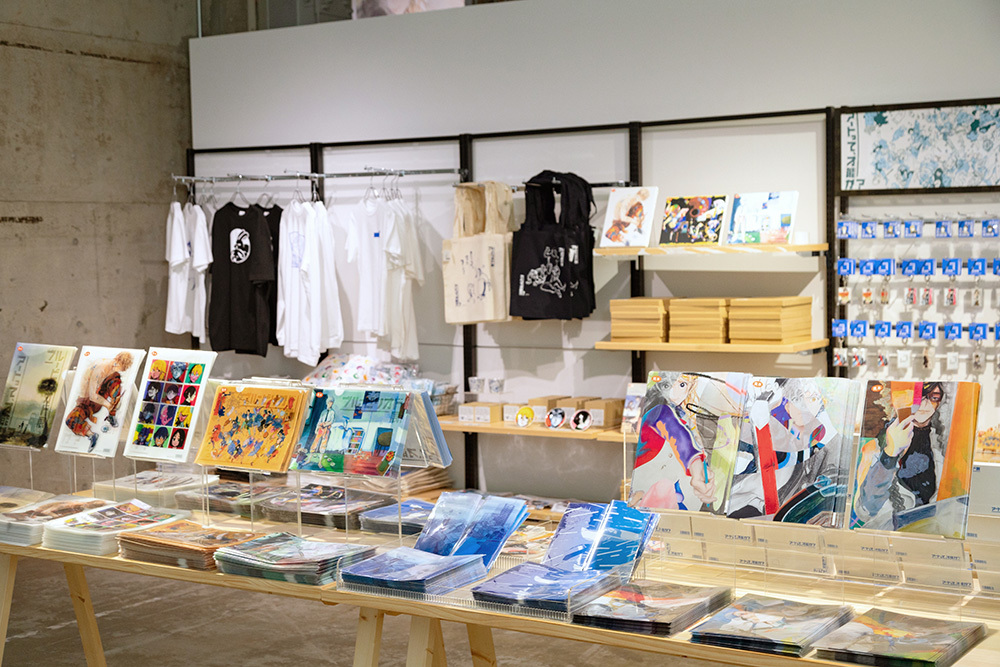
Monthly CX: This time, the gift shop offered a wide range of merchandise, right?
Okamura: We offered a wide range of items, including the official visual book, reproduction original artworks, clear files, postcards, and even goods from the "BLUE PERIOD. MUSEUM SHOP" produced by Mr. Yamaguchi. We also prepared visitor gifts and limited-time presents to help create lasting memories of the experience.
One particularly interesting challenge was collaborating with Sekaido, an art supply store, to create a dedicated corner. We sold canvases and other art supplies at the shop to encourage visitors inspired by the exhibition to act on their "I want to draw!" impulse. Staff mentioned that many art supplies sold well.
Monthly CX: I see. Preparing for visitors to take immediate action feels uniquely CX-designed.
CX is about deeply engaging with the user's personality to inspire action
Monthly CX: This project created an engaging exhibition with mechanisms enabling two-way interaction between the display and visitors. Looking back on the whole experience, what stood out to you, Mr. Okamura?
Okamura: Something I didn't realize when I was applying to art school, but came to understand after reading "Blue Period" and working in creative fields: "Art is incredibly tolerant."
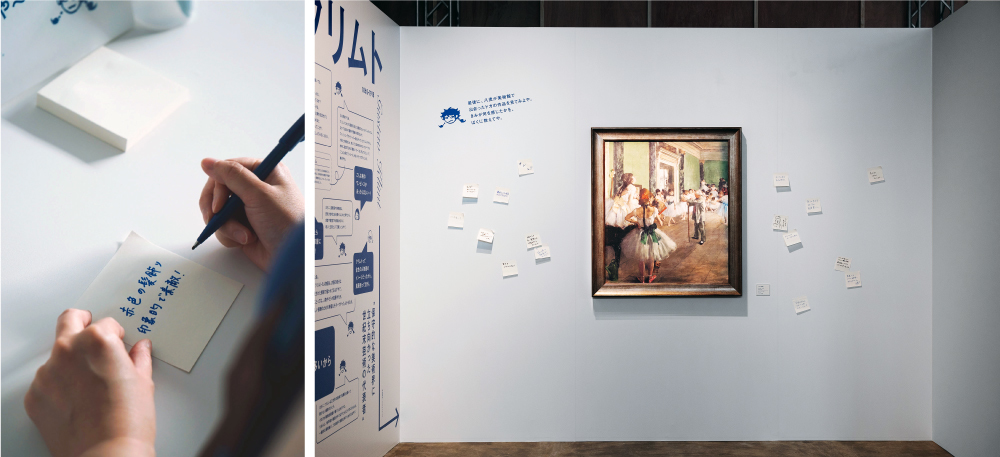
The venue had a corner where visitors could write their thoughts on sticky notes after viewing masterpieces, asking "What did you think?" We designed it as a space to encounter others' perspectives—realizing "Oh, you see it that way?" or "You noticed that?"—and I realized that kind of experience might actually be very close to how we engage with art.
Rather than viewing art appreciation as something lofty that requires study, it's more like just sticking a sticky note with whatever thought came to mind. And that's something no one can deny. I hoped people would realize that this tolerance is what makes art so wonderful and interesting. I feel this project worked well both as a manga exhibition and as an entry point to art exhibitions.
Monthly CX: Thank you. Finally, could you share your thoughts on CX creativity?
Okamura: I think it's about "giving people something to take away," whether it's a sense of unease or excitement. Without overdefining the "right answer" or how to play, it should be something that invites people to think, "What would I do?" and allows them to engage with their own personality. I believe CX has the potential to influence people's actions and ways of thinking through their experiences.
(Editor's Note)
In Monthly CX Issue 14, we discussed the design and experience creation for the "Blue Period Exhibition," based on the manga "Blue Period."
The "Blue Period Exhibition" went beyond traditional manga and art exhibitions, featuring many planned displays that delved deeper into visitors' personalities. This case study offers significant insights for future event and experience design.
This interview was conducted in collaboration with 'CX Creative Studio note' ( see here for details on CX Creative Studio note ). We are also working with Dentsu Digital Inc.'s CX Creative Team, not just the Dentsu CXCC team, to collect and introduce a broader range of case studies. If you're interested, please check that out as well.
If you have requests for future topics or case studies, please send a message to the Monthly CX Editorial Department via the contact page below. Thank you for your continued readership.
Was this article helpful?
Newsletter registration is here
We select and publish important news every day
For inquiries about this article
Back Numbers
Author

Naomi Okamura
Dentsu Inc.
Customer Experience Creative Center
Art Director / Planner
Born in 1991. Focusing on creating content that embodies the concept throughout the entire experience, as well as developing entirely new experiences and expressions utilizing technology, he conducts wide-ranging art direction and planning across various media including events, video, and graphics.

Monthly CX Editorial Department
Dentsu Inc.
CXCC (CX Creative Center)
The editorial team for "Monthly CX," a series where members of Dentsu Inc.'s CX-specialized division "CXCC" share insights on CX and creativity. By covering outstanding CX creative success stories within the agency or company, we unravel the essence and potential of CX creativity. Core members are Yoko Kibata, Hiroshi Koike, Nao Otani, Hirono Okumura, Yutaro Kosugi, Espin, Keisuke Saito, Kenji Oda, Hirozumi Takakusagi, and Motofumi Kanasaka, all belonging to CXCC.
